What You Need to Know About the South China Sea Dispute
By:
Two senior members of President Donald Trump's administration, Secretary of State Rex Tillerson and senior advisor Steve Bannon, have referenced China's extensive and growing territorial claims in the South China Sea as a potential flash point for war.
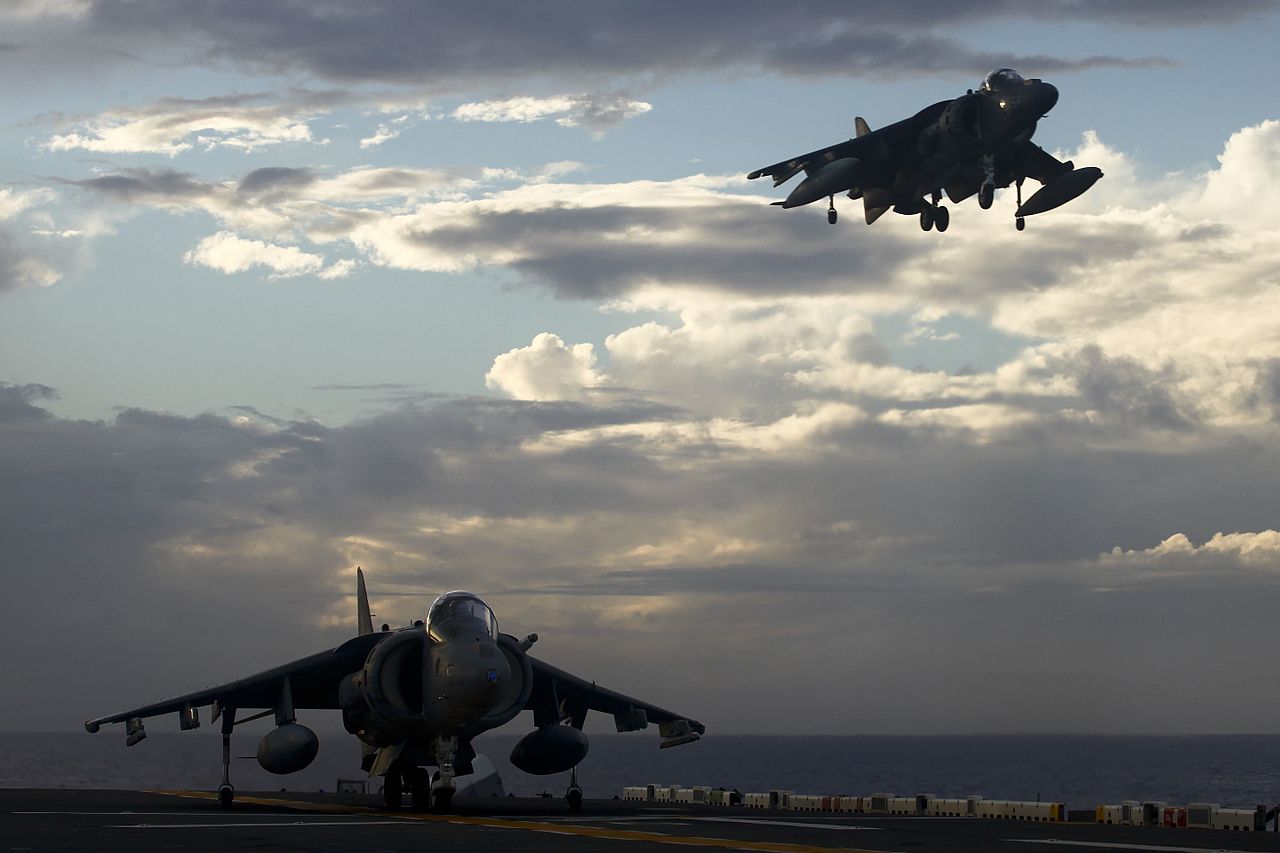 United States Department of Defense - wikimedia.org
United States Department of Defense - wikimedia.org
Should Americans be worried that armed conflict will break out?
Bannon said last March:
"We're going to war in the South China Sea in five to 10 years, aren't we? There's no doubt about that. They're taking their sandbars and making basically stationary aircraft carriers and putting missiles on those."
Tillerson said during his confirmation hearings that he considers the area a site for potential combat:
"We're going to have to send China a clear signal that, first, the island-building stops and, second, your access to those islands also is not going to be allowed."
What's in the South China Sea that's so valuable to risk war between two nuclear nations?
What does it matter to Americans? And what's this business about floating aircraft carriers?
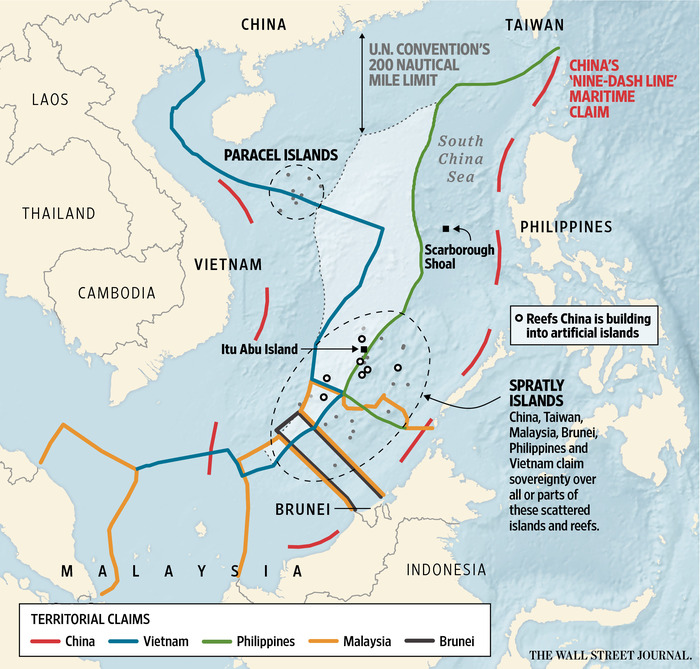 Wall Street Journal - wsj.com
Wall Street Journal - wsj.com
What exactly is the South China Sea?
The South China Sea is 1.4 million square miles of the Pacific Ocean surrounded by China, Taiwan, the Philippines, Malaysia, Brunei, Indonesia, Singapore, and Vietnam.
Why is it so important?
Its shipping lanes handle one third of the world's commercial shipping — as much as $5 trillion worth of goods every year.
It's also home to countless fishing grounds that feed much of Asia, water that China believes is its sovereign territory.
The area may also contain vast oil and gas deposits among its tiny island chains. The U.S. Energy Information Administration estimated that the seabeds in the South China Sea might contain as much as 11 billion barrels of oil and 190 trillion cubic feet of natural gas
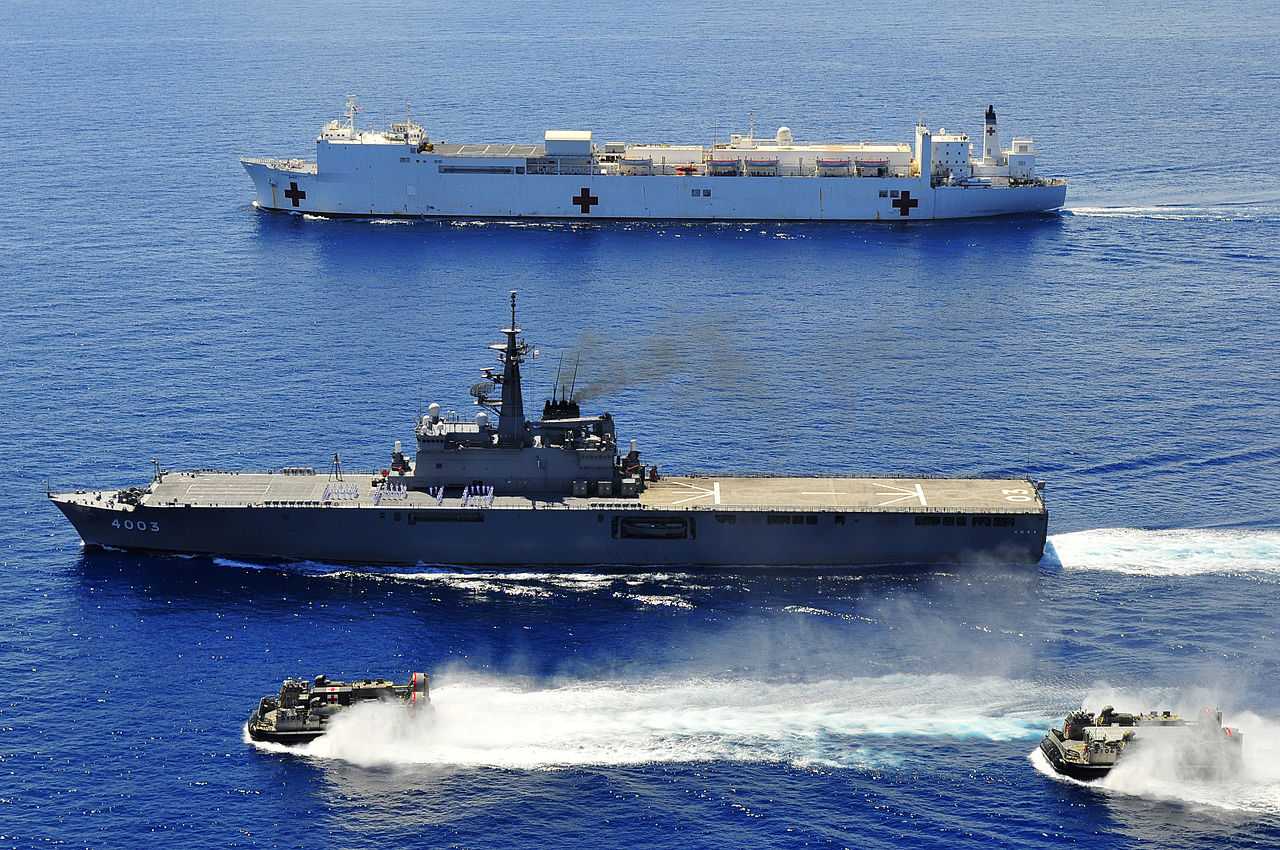 US Navy - wikimedia.org
US Navy - wikimedia.org
Who do these islands belong to?
Ask each country, and you'll get a different answer.
China claims sovereignty over everything inside of a radius it calls the "nine-dash line." It's literally a huge curve that China drew on a map in 1947, and the area includes the archipelagoes the Spratly Islands and Paracel Islands, which are largely uninhabited but have important strategic and economic value. China has militarized the area, building out existing islands with military bases and weapons to defend its claims.
Vietnam claims the Spratlys and Paracels as well and has fought several skirmishes with China over them.
Taiwan sees itself as the legitimate Chinese government and also has claims on the islands, as do the Philippines, Malaysia, and Brunei.
Because of the sheer number of ships transiting the area and the increasing military presence in the islands, conflict could break out among any of the claimants at any time.
 CIA - wikimedia.org
CIA - wikimedia.org
What's the deal with the fake islands China is building?
They aren't so much "fake islands" as they are massively bulked up shoals. Vast fleets dig up sediment and pack it onto existing reefs and inlets, creating islands big enough to support air units, radar stations, missiles, and guns.
The islands bolster China's territorial claims and could defend its shipping lanes if things went south. It's unknown exactly how much firepower China has in the Spratlys.
Every other claimant has an artificial airstrip in the Spratlys, but China is the most prolific builder. The U.S. claims China has added almost 3,200 acres, or 14.5 square miles, to the Spratlys.
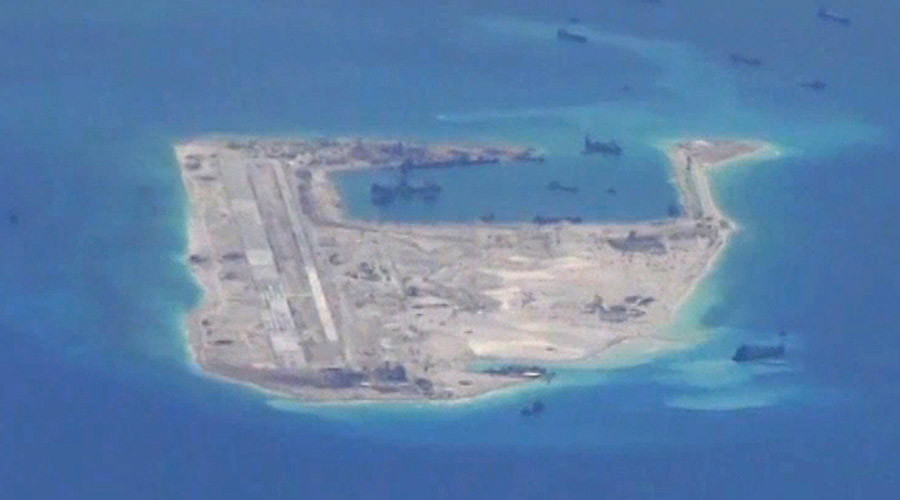 US Navy - wikimedia.org
US Navy - wikimedia.org
Does the international community recognize China's claims?
An international tribunal rejected China's nine-dash line last July, condemned its island-building, and found that most of the Spratlys belonged to the Philippines. Beijing has ignored the ruling.
How can the U.S. block access to islands China created?
Under President Barack Obama, the U.S. stayed out of the territorial dispute, recognizing the South China Sea as international waters and making it clear that America would defend the interests of its allies in the area.
But President Trump and his administration have indicated they intend to take a more hawkish stance, borne out by Tillerson's threats to block China's access.
The U.S. has a vested interest in keeping the sea lanes open and is treaty-bound to come to the defense of both Japan and the Philippines should they become involved in an armed conflict over the South China Sea.
But the only way to prevent China from building islands and accessing them is to blockade the Spratlys, a massive naval commitment that China would see as an act of war. The same would be true of any nation that attempted to block China from the islands.
 Simon Yang/Wikimedia Commons - wikimedia.org
Simon Yang/Wikimedia Commons - wikimedia.org
Would it really come to that?
As with much of the rhetoric from both China and the Trump team, it's hard to tell. There are a number of diplomatic channels through which parties can avoid armed conflict.
But if the Trump administration truly believes war is coming, it might try to start it on its terms.
China is fiercely protective of any territory it believes to be its own. War could start for any number of reasons:
- Blocked shipping routes
- Illegal seizure of cargo
- Two ships colliding with loss of life
- The U.S. or the Philippines interdicting Chinese access to the Spratlys
- Someone trying to tap oil reserves that belong to someone else
- A simple misunderstanding between armed vessels
Who would have the advantage?
China would have the advantage because its mainland isn't far away.
The U.S. Navy is much bigger, with 11 aircraft carriers compared to China's one, but it's scattered across the globe and would take time to mobilize.
China could quickly move a considerable fleet of ships and submarines into the Spratlys, backed up by close air support, drones, and missiles fired from the islands.
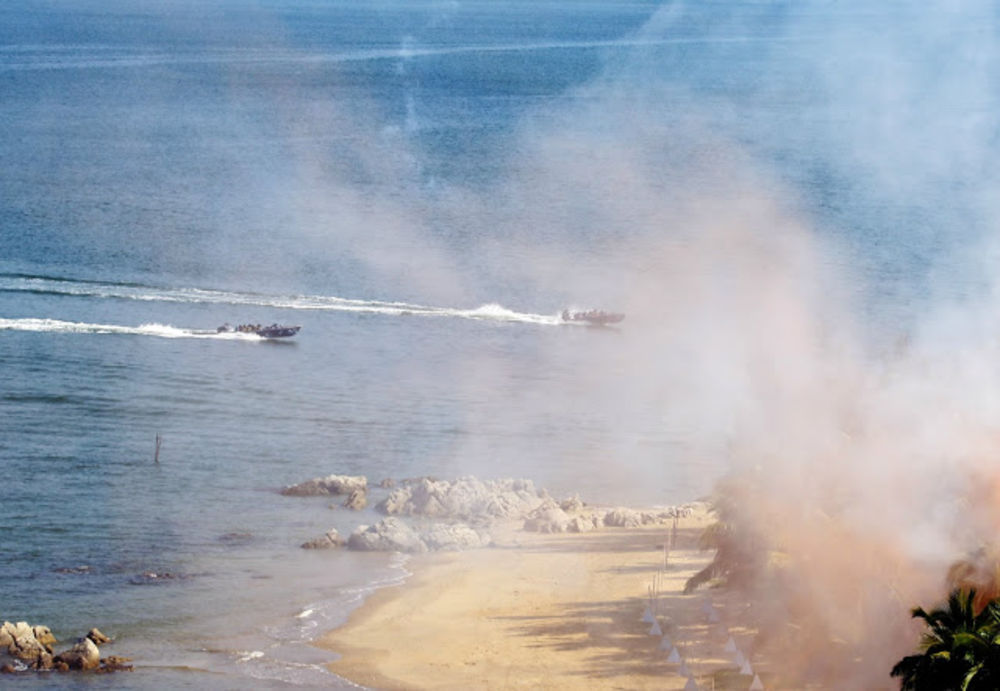 People's Liberation Army Navy - popsci.com
People's Liberation Army Navy - popsci.com
Conflict could take the form of anything from small-scale drone strikes to air combat to all-out barrages of cruise missiles fired by multiple combatants.
If the limited U.S. forces stationed in the area were overwhelmed, the Trump administration would likely feel pressure to respond with even more force. Both China and the U.S. have practiced amphibious invasions of the Spratly Islands, and a war could quickly escalate far beyond anyone's intention.
Escalate? Like with nuclear weapons?
It's extremely unlikely. China has long had a no first use policy when it comes to nuclear weapons.
The U.S. doesn't have such a policy, but Trump vowed during a presidential debate that he wouldn't "do first strike" and would do everything he could to keep a conflict from going nuclear.
No matter what happens in a South China Sea war, the biggest effect would likely be on the U.S. economy. The U.S. sends $100 billion in shipping through the South China Sea each month, and any disruption to these routes could severely damage American commerce and trade.
The stakes in the South China Sea are high, and the consequences of ill-considered moves or saber-rattling could be disastrous for the entire world.
